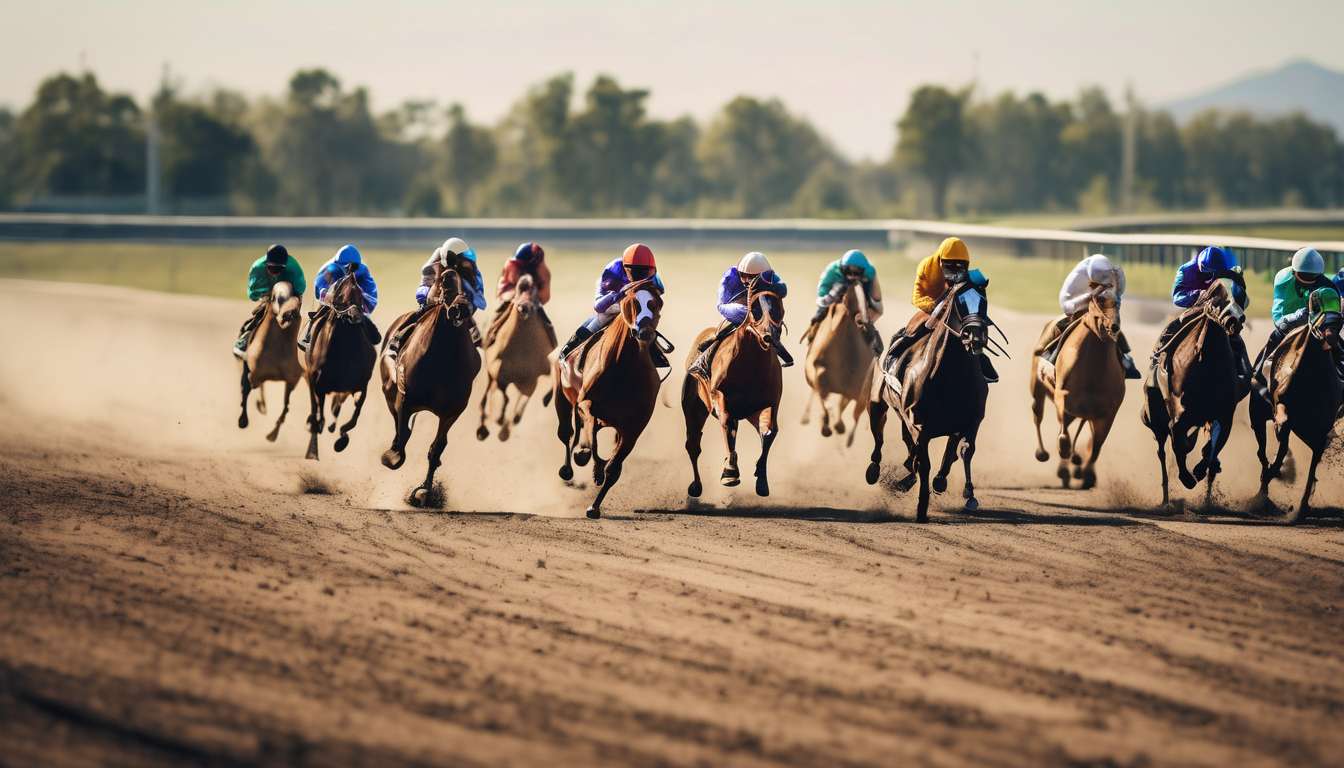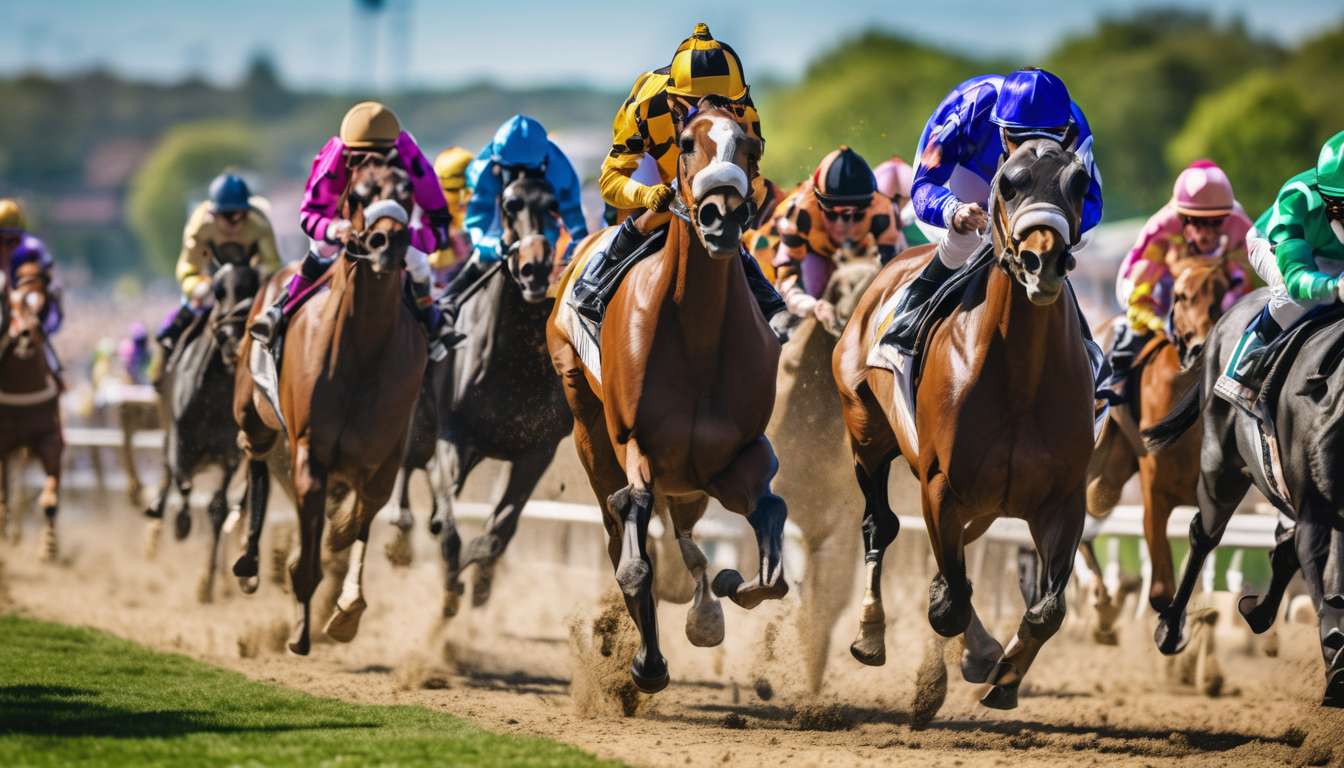As avid horse racing enthusiasts, we understand the thrill that comes with placing a well-informed bet. The key to making smart wagers often lies within the pages of the racing form. It can seem daunting at first, but with the right guidance, it transforms into a treasure trove of insights.
In this article, we are excited to share eight proven ways to effectively read a racing form, empowering us to make educated decisions at the track. We’ll delve into the intricacies of:
- Interpreting Past Performances
- Understanding Jockey and Trainer Statistics
- Assessing Track Conditions
among other crucial elements.
Together, we will demystify the jargon and highlight the critical indicators that can predict a horse’s performance. Whether we’re seasoned bettors or newcomers to the sport, these strategies will enhance our ability to analyze the data, ultimately increasing our chances of picking the winning horse.
Let’s dive in and enhance our betting acumen.
Deciphering Past Performances
When we’re deciphering past performances, we focus on analyzing a horse’s previous races to predict its future potential. Together, we delve into the rich history of each horse, examining past performances with a keen eye.
The speed figures tell us a compelling story about how fast a horse has run under various conditions, giving us a sense of its capabilities. However, we know that numbers alone aren’t enough; track conditions play a pivotal role in how a horse performs.
Considerations include:
- Was the track muddy or dry?
- Was it fast or slow?
By understanding these nuances, we can better predict how the horse might fare in upcoming races. It’s like piecing together a puzzle, where every detail counts.
As we sift through the data, we do so with a shared sense of purpose and excitement, knowing we’re part of a community that thrives on these insights. Together, we’re not just betting—we’re connecting with the spirit of the race.
Analyzing Jockey and Trainer Stats
When analyzing jockey and trainer stats, we focus on the intricate dynamics between the rider and the horse and how the trainer’s expertise can influence race outcomes. Together, they form a powerful team that can significantly impact a horse’s performance.
Past Performances are crucial for uncovering patterns and insights. Key questions include:
- Has the jockey consistently delivered strong results with specific horses?
- Does the jockey perform better under certain conditions?
Evaluating these elements gives us a sense of reliability and skill.
Speed Figures are another important factor, showcasing a horse’s potential and how effectively the jockey can harness that speed. A strong partnership often results in better Speed Figures, indicating a harmonious connection between rider and horse.
The trainer’s role is equally essential. Their strategies can:
- Adapt to varying Track Conditions
- Ensure the horse is well-prepared for any challenge
By understanding these dynamics, we can better predict which pairings are likely to excel. This fosters a sense of community and shared excitement among enthusiasts.
Evaluating Track Conditions
Understanding track conditions is crucial because they can dramatically affect a horse’s performance and alter race outcomes. As we dive into the racing form, we need to pay close attention to the track’s current state.
Whether it’s:
- Fast
- Muddy
- Sloppy
Each condition can benefit certain horses over others. By examining past performances, we can identify patterns in how horses have fared under similar conditions. This data is invaluable, helping us make informed decisions and feel more connected to the racing community.
Speed figures give us insights into a horse’s capability on different track surfaces. These figures allow us to:
- Compare results across various races
- Evaluate performance under different conditions
Moreover, considering track conditions alongside speed figures and past performances ensures we’re not missing key information. Together, we can harness this knowledge to better predict outcomes and feel a sense of camaraderie with fellow racing enthusiasts.
Unraveling Speed Figures
Speed figures are crucial tools we use to decode a horse’s efficiency and stamina across different races. They serve as our compass, guiding us through the maze of Past Performances. By translating raw race times into an easily comparable number, we can gauge how a horse has performed under various Track Conditions.
Speed figures allow us to feel part of a community that shares insights and strategies, elevating our racing experience.
As we dive into a horse’s Past Performances, speed figures unveil how it fared in previous contests. Whether the track was muddy or fast, these figures help us understand the horse’s adaptability and potential. This information empowers us to make informed decisions, fostering a sense of camaraderie as we discuss and debate potential outcomes.
Let’s embrace speed figures as our racing form allies, enabling us to connect with fellow enthusiasts on a deeper level and enriching our shared passion for the sport.
Grasping Class Levels
Understanding class levels is key to evaluating a horse’s competition and predicting its performance in future races. When we dive into a racing form, we’re not just looking at names and numbers; we’re connecting with a community that appreciates the nuances of horse racing.
Class levels help us gauge the quality of competition a horse has faced in its past performances. By examining this, we can better assess whether the horse is stepping up or dropping down in class for its next race.
Speed figures come into play here, as they provide a numerical way to compare horses’ abilities across different races.
-
A horse consistently posting strong speed figures against high-class opponents might fare well even in tougher competitions.
-
Meanwhile, track conditions also affect these performances. A horse might excel on a dry track but struggle in the mud.
By understanding how class levels interact with past performances, speed figures, and track conditions, we can make more informed predictions and feel part of the racing community.
Studying Workouts and Training
When we delve into workouts and training, we’re uncovering a horse’s preparation and potential for upcoming races. It’s like being part of a special group that understands the secret language of racing forms. We look at how recent workouts compare to Past Performances, seeking patterns or improvements.
A horse’s workout times can give us insight into their current form.
- Are they showing faster Speed Figures than before?
- That might indicate they’re peaking at the right moment.
We also consider Track Conditions during these workouts.
- A horse might excel on certain surfaces, and knowing the conditions they trained under helps us gauge their adaptability.
- If a horse consistently performs well in muddy conditions during workouts, we can expect similar resilience on a rainy race day.
By studying these elements, we become part of a community that’s in the know, making us feel connected as we share insights and predictions with fellow enthusiasts.
Understanding Equipment Changes
Equipment changes can significantly impact a horse’s performance, and understanding these adjustments helps us anticipate their potential effects on race day.
When we examine past performances, we often notice patterns where changes in equipment like blinkers or shoes have altered a horse’s outcome. These modifications can:
- Enhance focus
- Improve traction, depending on track conditions
It’s crucial that we pay attention to these details, as they can influence a horse’s speed figures, giving us insights into its potential performance.
Recognizing equipment changes fosters a sense of belonging within the racing community, as we’re all striving to understand the intricacies of the sport. By comparing past performances with and without certain equipment, we can predict whether a horse might improve or struggle under current track conditions.
When we analyze these adjustments, we’re not just reading data; we’re connecting with the sport on a deeper level. This builds a collective knowledge that enhances our enjoyment and camaraderie.
Factoring in Race Distance
Race Distance and Horse Performance
Race distance plays a pivotal role in determining a horse’s performance. It requires us to assess how well a horse’s stamina and speed align with the length of the race.
To evaluate a horse’s suitability for a race distance, we need to:
-
Examine Past Performances:
- Dive into the Past Performances section of the racing form.
- Evaluate each horse’s previous races at similar distances.
- Determine if the horse has the endurance for longer races or the quick burst needed for sprints.
-
Review Speed Figures:
- Speed Figures provide insight into how fast a horse ran in its past races, adjusted for race distance.
- A consistently high speed figure at a similar distance can signal a strong contender.
Track Conditions
Track conditions further influence how a horse might perform over different distances. Consider the following:
- A horse that excels on a wet track might tackle a longer race differently than one that prefers dry conditions.
By considering these elements—race distance, past performances, speed figures, and track conditions—we can make more informed decisions, feeling a sense of camaraderie as we share in the excitement of race day.
How do I choose which races to bet on when reading a racing form?
When we look at a racing form, we focus on key details to decide which races to bet on.
Important factors to consider include:
- Past performance
- Jockey and trainer stats
- Track conditions
These elements help us make informed choices and increase our chances of winning.
By analyzing the information in the form, we can confidently select the races that align with our strategies and preferences.
It’s all about using data to guide our betting decisions.
This approach ensures that our decisions are based on evidence rather than guesswork, ultimately enhancing our betting experience and success rate.
What should I do if I notice discrepancies in the racing form data?
If we notice discrepancies in the racing form data, we should immediately bring them to the attention of the track officials.
It’s essential to ensure the accuracy and integrity of the information provided to all bettors. By reporting any inconsistencies, we can help maintain a fair and transparent betting environment for everyone involved.
Remember, it’s in our collective interest to uphold the highest standards of data accuracy in horse racing.
How can I find insider tips or expert opinions to complement the information in a racing form?
When seeking insider tips or expert opinions to enhance racing form analysis:
We turn to trusted sources within the industry. These are knowledgeable individuals who offer valuable insights and perspectives that complement the data we already have.
By incorporating these additional viewpoints into our decision-making process, we feel more confident in our selections and strategies when it comes to handicapping races.
Conclusion
Now that you’ve mastered the art of reading a racing form, you’re well-equipped to make informed decisions at the track.
Key Skills for Becoming a Savvy Bettor:
- Decipher Past Performances: Assess how horses have performed in previous races to predict future outcomes.
- Analyze Jockey and Trainer Stats: Evaluate the success and experience of the jockeys and trainers to gauge a horse’s chances.
- Consider Various Factors:
- Track Conditions
- Speed Figures
With these skills, you’re on your way to becoming a savvy bettor.
Additional Methods to Hone Your Skills:
- Study Workouts: Observe recent exercises to determine a horse’s current fitness level.
- Understand Equipment Changes: Note any changes in gear that might affect a horse’s performance.
- Factor in Race Distance: Consider how the length of the race suits the horse’s running style and stamina.
With these proven methods in your toolkit, you’re ready to tackle any race with confidence. Keep honing your skills and enjoy the thrill of the track!




